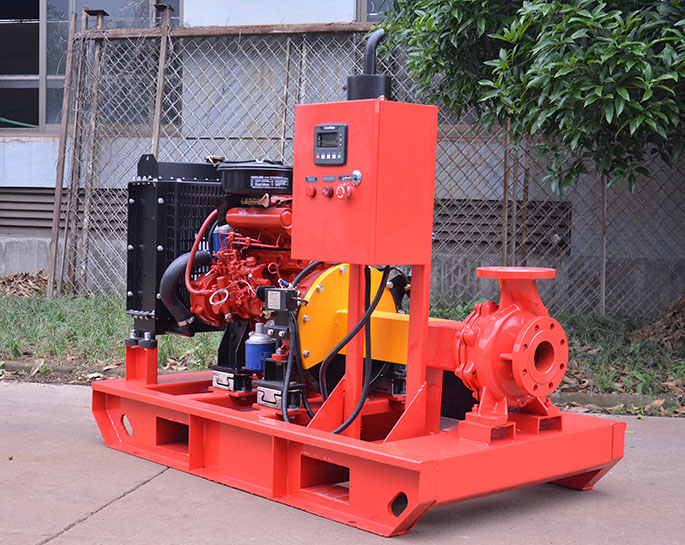How does a fire pump work?
A fire pump is a crucial component of a fire protection system designed to provide adequate water flow and pressure to suppress or control fires in buildings, facilities, or industrial settings. It's commonly used when the available water pressure from the municipal water supply or other sources isn't sufficient to meet the demands of the fire sprinkler system or fire hydrants. Here's how a fire pump works:
-
Water Source: Fire pumps are typically connected to a dedicated water source, which could be a water storage tank, a dedicated well, a reservoir, or another reliable water supply. The water source should have the capacity to provide the necessary water volume and pressure required by the fire protection system.
-
Suction Piping and Strainer: The fire pump draws water from the water source through a suction pipe. A strainer is often placed at the end of the suction pipe to prevent debris and large particles from entering the pump and causing blockages.
-
Inlet Valve: There is usually an inlet valve between the suction pipe and the pump. This valve allows operators to control the flow of water into the pump and shut it off if needed.
-
Impeller: The heart of the fire pump is the impeller, which is a rotating component with curved blades. The impeller is housed in the pump casing. When the impeller rotates, it creates a centrifugal force that pushes water outward and increases its pressure.
-
Discharge Piping: The high-pressure water from the impeller is directed into the discharge piping, which distributes the water to the fire protection system, including fire sprinklers, fire hydrants, hoses, and other firefighting equipment.
-
Pressure Relief Valve: A pressure relief valve is often installed in the discharge piping to prevent excessive pressure buildup in the system. If the pressure surpasses a certain level, the valve opens temporarily to release excess water and reduce the pressure.
-
Controller: Fire pumps are equipped with controllers that monitor and control the pump's operation. These controllers can automatically start the pump when the pressure drops below a set level, and they can also shut down the pump when the system is pressurized adequately.
-
Jockey Pump: In some systems, a jockey pump is used to maintain a consistent pressure in the system. It operates at a lower pressure than the main fire pump and is responsible for compensating for minor pressure fluctuations.
-
Backup Power: Fire pumps are often equipped with backup power sources, such as generators, to ensure their operation even during power outages.
-
Testing and Maintenance: Regular testing and maintenance of the fire pump are essential to ensure its reliability. This includes exercising the pump periodically, inspecting for wear and tear, checking the controller's functionality, and maintaining clear access to the pump and its components.
Overall, the fire pump's role is to boost water pressure to the required level for effective firefighting, ensuring that an adequate water supply is available to control or suppress fires in a timely manner.


.png)
.png)

.png)


